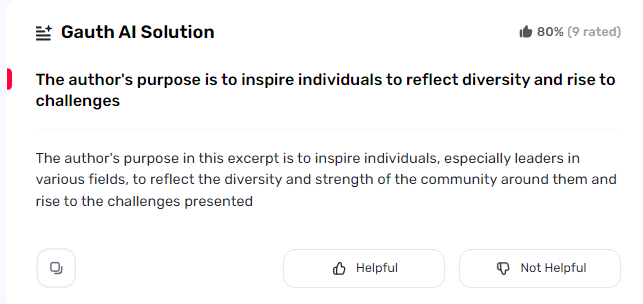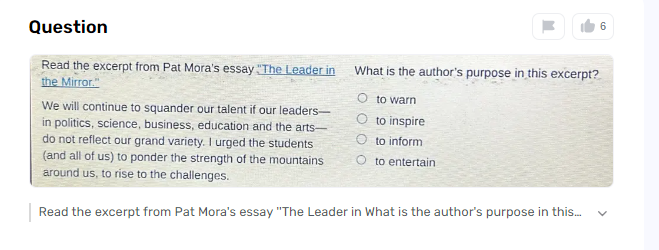Table of Contents
While perusing a piece of composing, taking into account the creator’s motivations is frequently useful. Readers can gain a deeper comprehension of the text and more significant translations by comprehending the author’s expectations. But it might not always be easy to figure out why a certain choice was made. In any case, have confidence.
Finding the creator’s goal can be a much simpler and extremely rewarding endeavour with a few helpful clues and tips. One of the most amazing ways to determine who wrote an entry is to look at the language and tone. Likewise, ponder how the entry is created in general and what it means for the creator. In this way, you will be able to explore what is the author’s purpose in this excerpt? to warn to inspire to inform to entertain, without facing any complications.
Tricks to Find the Auther’s Purpose in a Particulate Excerpt
Here are some of the tricks to find the author’s purpose in an excerpt:
Break down the Tone and Temperament
Conceivably the earliest interesting point while endeavoring to conclude the maker’s inspiration is the tone and outlook of the concentrate. The temperament describes the overall inclination or atmosphere created by the composition, while the tone refers to the writer’s attitude toward the subject.
You can become familiar with the creator’s expectations by checking these angles out. For example, the writer might be endeavouring to entertain or engage the peruser assuming the tone is light and clever. On the other hand, the author may be attempting to elicit a specific emotional response or convey a significant message if their tone is serious and melancholy.
Think about the Crowd
The audience for which the writer is writing should also be taken into consideration when attempting to ascertain the author’s objective. While writing, writers frequently focus on a specific group of readers, and the audience they are attempting to reach may influence their motivation. If, for instance, the excerpt is written in a straightforward manner, the author may be attempting to educate or inform a general audience.
Identify Key Phrases and Words
Watchwords and articulations inside the text can moreover give hints about the maker’s inspiration. Pay attention to words or phrases that are used a lot because they might point to a central idea or theme that the author is trying to emphasize. Additionally, search for words that have compelling close to home or convincing implications since they can show the creator’s actual expectations.
Examine the Organization and Structure
The extract’s construction and association can likewise reveal insight into the creator’s objective. Contemplate the overall movement of the structure, as well as any models or game plans that emerge. For example, the writer might be endeavouring to genuinely draw in the peruser preceding sending off into a more top-to-bottom conversation on the off chance that the selection starts with an emotional tale and, moves into a tone that is more intelligent.
Steps to Use Gauth for Problem Solving
Here are the steps to use Gauth:

Step 1. Input Query
In order to use Gauth AI, you must first enter your query into the system. This could be a general inquiry about the author’s intent in a particular passage or a specific portion of a text that you are attempting to analyze.
Step 2. Stand by Till Handling
You will need to wait for Gauth AI to process the information after entering your query. The artificial intelligence framework will take a gander at the text and sort out significant things like the creator’s tone, style, topics, and expository gadgets by utilizing state-of-the-art normal language handling and AI calculations.
Step 3. Get the Solution
After the handling is finished, you will get an answer from Gauth’s simulated intelligence that frames the creator’s motivation in the passage you gave. You will get a comprehensive analysis of the text from the AI system, highlighting important details like the author’s intended message, the audience, and the overall goal of the writing.
Final Talk
Key elements like tone, language, and overall message must be carefully analyzed and considered in order to determine the author’s purpose in a particular excerpt. By focusing on these stunts and signs, perusers can acquire a more profound comprehension of the text and the creator’s expectations behind it.

